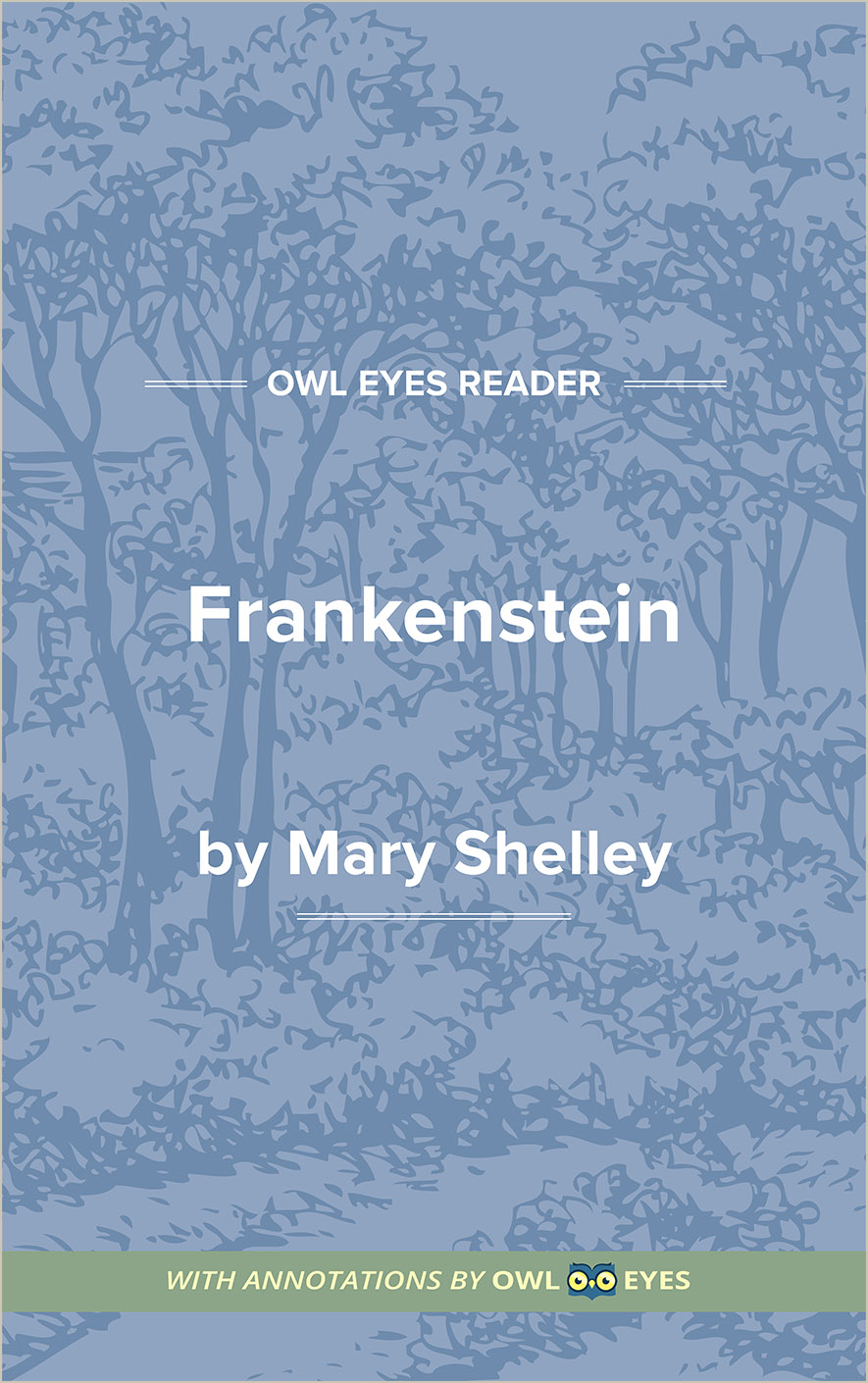Study Guide
Analysis Pages
Summary
Frankenstein: Or, The Modern Prometheus is the work for which Shelley is remembered by the general public. The story unfolds in a series of letters from Robert Walton, an enterprising arctic explorer, to his sister in England. Walton reports the sighting of a giant manlike creature driving a dogsled in the icy distance. This scene is followed by the rescue of a man whose sled had become stranded in the ice floe. This man is Victor Frankenstein.
As he recovers his health, Frankenstein relates his story. He tells of his warm family life in Geneva and of his early enthusiasm for the speculative natural philosophy of alchemists such as Cornelius Agrippa. At the age of twenty-one, he leaves to study science at Ingolstadt. There, he learns the difference between modern science and mysticism. He embraces scientific method but holds onto one of the dreams of his former models—the creation of life. Ultimately, he completely embraces this goal, assembling a being of huge scale in order to simplify its construction. When his creature gains life, Frankenstein is instantly revolted. He exits the flat and wanders about, hoping that the spark of life in the creature will expire spontaneously. The following day, the creature has disappeared, and Victor is visited by his best friend, Henry Clerval, who, unaware of the creature’s existence, helps Victor to regain his composure over the next several months. In early May, Victor’s younger brother William is murdered outside Geneva. A servant is accused of the crime. Upon his return home, Victor catches a brief sight of the creature, whose existence has nearly slipped Victor’s mind. He senses that the creature is responsible for his brother’s murder, but he remains silent as the servant is convicted of the crime. After the trial, while vacationing in the Alps, Victor meets the creature on a glacier. There, he learns of the creature’s cruel rejection by humankind, its self-education (the creature is easily the most articulate character in the book), and its subsequent revenge on its creator. Though the creature did indeed murder William, Victor is torn between hatred and sympathy. Reluctantly, he agrees to animate a female companion for the creature.
After months of indecision, Victor retires to the Orkney Islands (north of Scotland) to begin the work that he has promised. Midway through, in sight of the creature himself, he becomes fearful of the havoc that might be caused by a race of such fiends. He destroys the lifeless torso over which he stands. The creature vows to be with Victor on Victor’s wedding night (he is engaged to a cousin) and departs. After murdering Victor’s friend Clerval, a crime of which Victor is briefly accused, the creature disappears. Victor is wed in Geneva and awaits his confrontation with the creature. Instead, the creature slips into his bedroom, murders his bride, and escapes. Finally, Victor goes to the authorities. Finding no hope there, he pursues the creature himself, winding up on Walton’s ship. There, he dies from the exhaustion of the hunt. The novel closes with a visit to Walton’s ship by the creature. The creature laments the death of his creator and departs, vowing to take his own life.
As is clear, Shelley’s novel is not quite the grave-robbing horror story associated with the original Hollywood version starring Boris Karloff. Instead, the book exemplifies all the characteristics of Shelley’s work noted previously. Stylistically, Shelley moves the narrative along at a rapid pace, avoiding weighty details or intricate plotting. The result is a book that is easily read and in which the geographic settings are striking, in part because they have so little with which to compete in the way of description. On the other hand, there is only one well-realized character, the creature himself, which, in this case, happens to be enough. In addition, Frankenstein is—to put it frankly—hopelessly contrived, with coincidence appearing as a law of...
(The entire page is 1,075 words.)
Owl Eyes subscribers get unlimited access to our expert annotations, analyses, and study guides on your favorite texts. Master the classics for less than $5/month!

